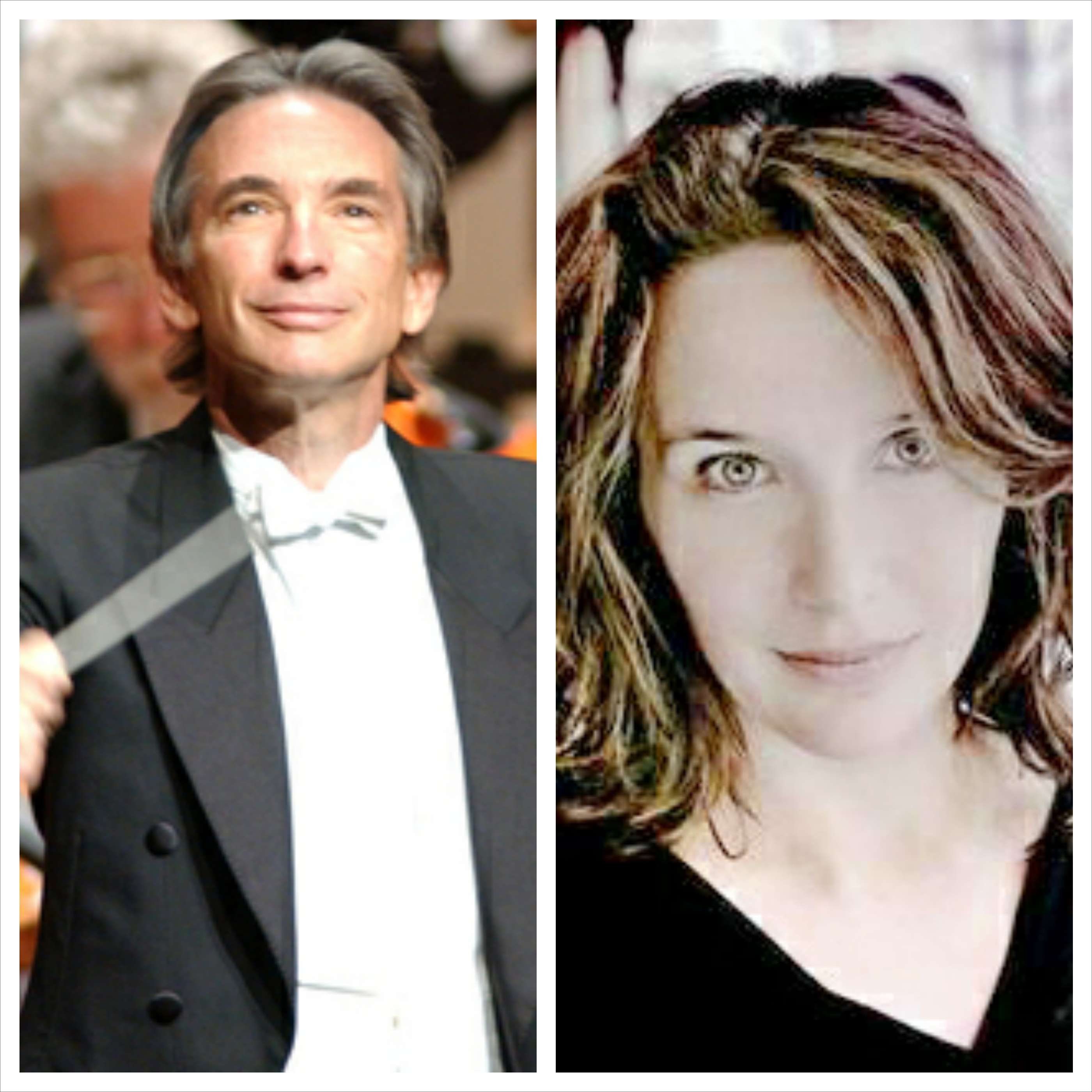|
Back
When Terror Follows Triumph New York
Isaac Stern Auditorium, Carnegie Hall
12/06/2013 -
Johannes Brahms: Piano Concerto No. 1 in D Minor, Opus 15
Hector Berlioz: Symphonie Fantastique, Opus 14
Hélène Grimaud (Piano)
Philadelphia Orchestra, Michael Tilson Thomas (Conductor)

M. Tilson Thomas/H. Grimaud
(©www.michaeltilsonthonmas.com/Matt Hennek)
Neither Mishima’s pre-suicide rant or a simple genuflection are sufficient to assuage my guilt at missing the first movement of the Brahms 1st Concerto last night.
For the record, though, I wasn’t late, I was ten minutes early for the 8.00 pm concert. The only problem being (gulp) that the concert started at 7.30 pm. (Sigh and one more genuflect.)
With any other pianist, I might have reconstructed how the Brahms would sound. But Hélène. Grimaud is anything but any other pianist. The French-born artist is fierce and independent, as iconoclastic in her life (the founder of a wolf sanctuary) as in her performances.
No, Ms. Grimaud could hardly be called a musical eccentric à la Glenn Gould. But nothing is ever predictable with her performances. She is never superficially poetic, she plumbs deep to bring up the metaphysics. She is sensitive–not delicate–to every any nuance. And especially with big brawny pieces like thye Brahms Concerto, she would be in her element.
For a woman to play this is itself rare. Just as Richard Goode two nights ago gave a fine performance of a Mozart concerto written for a woman, Ms. Grimaud played a concerto which few men would dare. The First is tough, visceral, muscular. Theoretically, it would take a mesomorphic physique to get it right. Not the diminutive Ms. Grimaud.
But Ms. Grimaud’s recordings of the Concerto are amongst my favorites, and I assume that under Michael Tilson Thomas (a replacement for the ailing Philadelphia Orchestra Music Director) her Maestoso first movement should have been even more masterful.
Finally seated, I heard a second movement with tempos which were almost static. Conductor Tilson Thomas always takes chances, so I would gather that he readily replaced Brahms’ Adagio tempo for Ms. Grimaud’s Largo.
Yet the results were as moving as the music was sometimes still. Though this might have been an aural illusion. Perhaps the tempo was the original. But it sounded far far slower. The reason is that Mr. Grimaud seemed to feel each key. Without suspending or retarding the rhythm in any way, she gave each note a breath of its own, an individual color.
Those breaths meant life, and in that most enigmatic section, the swelling cantilena which can sometimes get away from even the best pianist, Ms. Grimaud made each note transparent, almost legato. Yet not a single note merging into any other. This was no prayerful movement, no sermon in sound. But it was undoubtedly spiritual, even as her physical movements were on the verge of working into a trance.
There was no time for that, though in the final rondo. Ms Grimaud probably scratched out the ”ma non troppo” from Brahms’ ”Allegro”, for she went at it with defiance of the elements. Every note sparkled, the trills were resonant, those great notes tumbled after each other as if propelled. If other pianists find this a movement for showing off their skills, Ms. Grimaud knew that we were already aware of them. She wanted again to make this an exercise in clarity, expansion, and showing off the composer’s skill in creating endless songs.
Incidentally, saying something more about Ms. Grimaud’s character, while the audience gave her a standing ovation, she reserved most of her bows for the Philadelphia Orchestra.
That orchestra was no match for Ms. Grimaud’s overpowering performance. That was left to the other long work on the program, Berlioz’ essay on the dreams and nightmares of opium, his Symphonie fantastique. This was no poem of the unknown, though. Laudanum was as common to mid-19th Century artists as grass was to the Beats, and Berlioz knew of what he was writing.
Fortunately, Michael Tilson Thomas knows his Philadelphia Orchestra forces well, and he made them play out the traumatic work, generating the most gorgeous color from strings, brass and of course clarinet, oboe and English horn.
Just about anybody can make those last two movement scare the daylights out of any willing audience, but to give form to the first part is a greater challenge. He aimed towards a bit of acceptable violence in the first two movements, yet that made the quiet endings all the more menacing. The echoes of winds in the meadow reverberated around the Carnegie Hall stage. And that last Dies Irae was given all the horror of Eternal Burning, by the Philadelphia horns.
Twas the dream of Berlioz brought to such fruition that the New York figures in the dark rain after the concert seemed far more spectral than the reality of Mr. Tilson Thomas’s hallucinatory visions.
Harry Rolnick
|